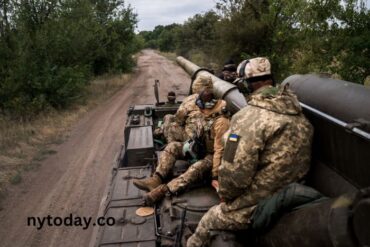The ongoing conflict in Ukraine, known as “Guerre en Ukraine” in French, has captured global attention due to its geopolitical significance and humanitarian implications. This comprehensive article will delve into the origins, key players, and the evolving nature of the conflict. This exploration aims to provide readers with a nuanced understanding of the complex dynamics at play in Ukraine.
Historical Context
To comprehend the war in Ukraine, one must consider the historical backdrop. The region has a rich and complex history, shaped by centuries of cultural, political, and economic influences. From the medieval Kyivan Rus to the Soviet era, Ukraine’s history has been marked by autonomy and external domination.
Euromaidan Protests
The roots of the current conflict can be traced back to the Euromaidan protests of 2013-2014. Ukrainians took to the streets, demanding closer ties with the European Union and protesting against corruption. The government’s response, marked by violence, led to a dramatic escalation and ultimately set the stage for broader geopolitical tensions.
Annexation of Crimea
One of the pivotal moments in the conflict was Russia’s annexation of Crimea in 2014. This move, widely condemned by the international community, heightened tensions between Russia and Ukraine. The annexation had far-reaching consequences, including economic sanctions against Russia.
Eastern Ukraine Conflict
Simultaneously, a conflict erupted in eastern Ukraine, primarily in Donetsk and Luhansk. Pro-Russian separatists declared independent republics, leading to a protracted and bloody conflict. The involvement of Russian forces in supporting the separatists added a layer of complexity to the situation.
International Response
The war in Ukraine prompted a robust international response. The European Union, the United States, and other Western nations condemned Russia’s actions and imposed sanctions. Diplomatic efforts were made to find a peaceful resolution, but the situation remained fragile.
Humanitarian Impact
The conflict has taken a devastating toll on the civilian population. Displacement, loss of life, and infrastructural damage have created a dire humanitarian crisis. International organizations and NGOs have been working to provide aid and support to those affected.
Minsk Agreements
Efforts to bring about a peaceful resolution have centered around the Minsk agreements. These accords brokered in 2014 and 2015, aimed to establish a ceasefire and a framework for a political settlement. However, implementation has been challenging, with ceasefires repeatedly violated.
Geopolitical Implications
The conflict in Ukraine has broader geopolitical implications, impacting relations between Russia and the West. It has tested the unity of the European Union and NATO, with debates on how to respond effectively to Russian aggression.
Energy Politics
Ukraine’s strategic location as a transit country for Russian natural gas adds an economic dimension to the conflict. Disputes over energy resources and pipelines have further complicated the geopolitical landscape.
Cyber Warfare and Disinformation
In the digital age, the war in Ukraine has seen the rise of cyber warfare and disinformation campaigns. Both sides have engaged in online tactics to shape narratives and influence public opinion, adding a new dimension to modern conflict.
Ongoing Challenges
As of the latest developments, challenges persist in achieving a lasting peace in Ukraine. Issues such as the status of Crimea, the autonomy of eastern regions, and the withdrawal of foreign forces remain contentious in negotiations.
Global Solidarity
Despite the complexities, there has been a global outpouring of solidarity with Ukraine. The conflict has sparked movements, cultural expressions, and international partnerships to raise awareness and support the Ukrainian people.
Media Coverage and Perception
How the war in Ukraine is portrayed in the media plays a crucial role in shaping public perception. Analyzing media narratives and understanding the biases involved is essential for gaining a well-rounded perspective on the conflict.
The Road to Peace
Achieving lasting peace in Ukraine requires a multifaceted approach. It involves diplomatic efforts, adherence to international law, addressing humanitarian needs, and fostering dialogue between all parties involved.
Conclusion
In conclusion, the war in Ukraine is a multifaceted crisis with deep historical roots and complex geopolitical dimensions. Understanding the intricacies of the conflict is crucial for fostering meaningful dialogue and working towards a sustainable solution. International cooperation, diplomacy, and a commitment to upholding human rights are essential components in Ukraine’s journey toward lasting peace.





